Efficiently kill 1,000,000 enemies and get the achievement called Conqueror of All.
Death_Multiplier
As is par for the course, we need to increase the unit size first.
The default location of the file you need is here
C:\Users\YourPCName\AppData\Roaming\The Creative Assembly\Empire\scripts\preferences.empire_script.txt
On the 9th row is campaign_unit_multiplier, which you should change to 8, or even better 16, if your PC can handle it. 16 will give you 960 cavalrymen per unit.
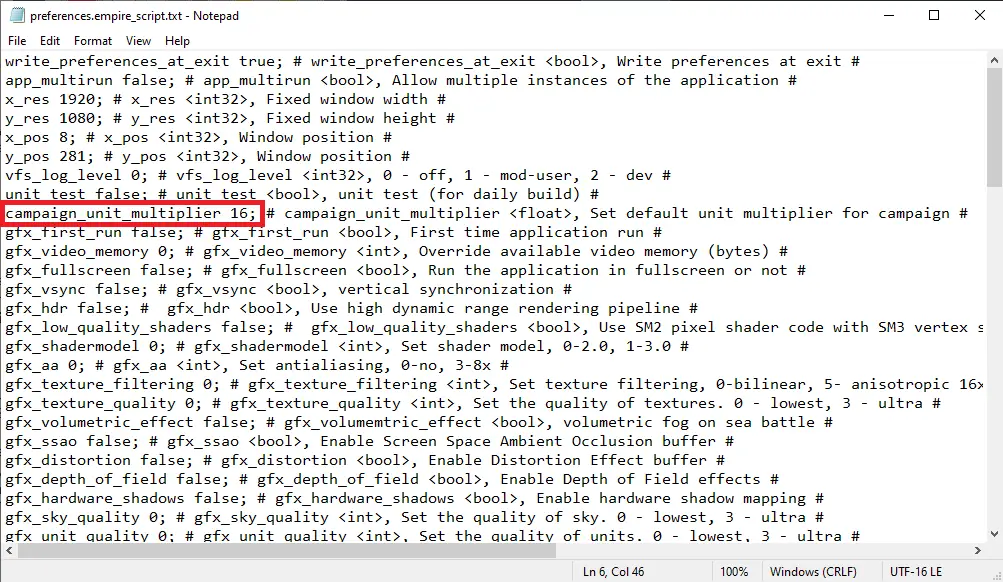
Killer setup
Give yourself an army of Howitzers and give your enemy one giant pile of cavalry. Like this
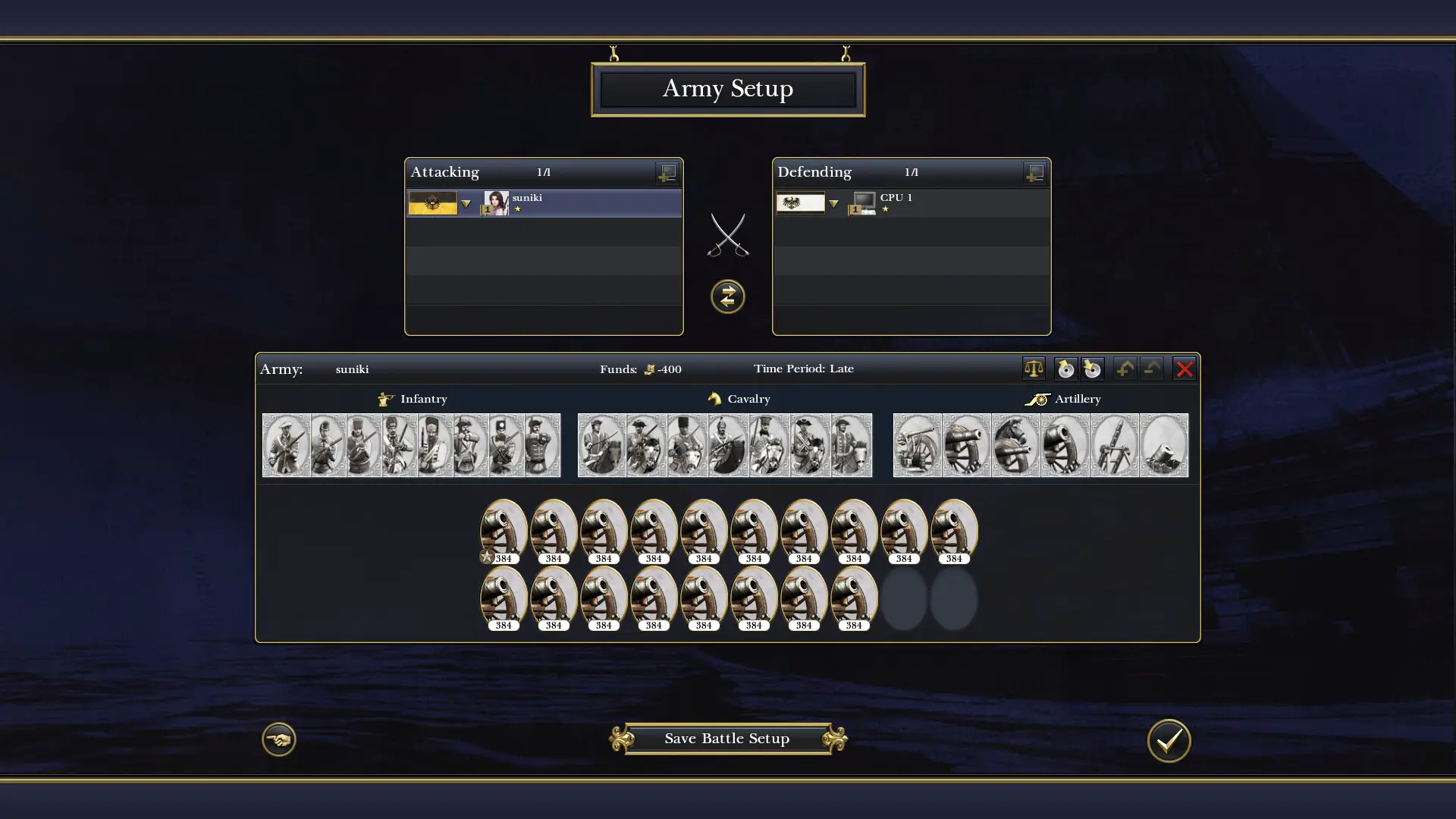
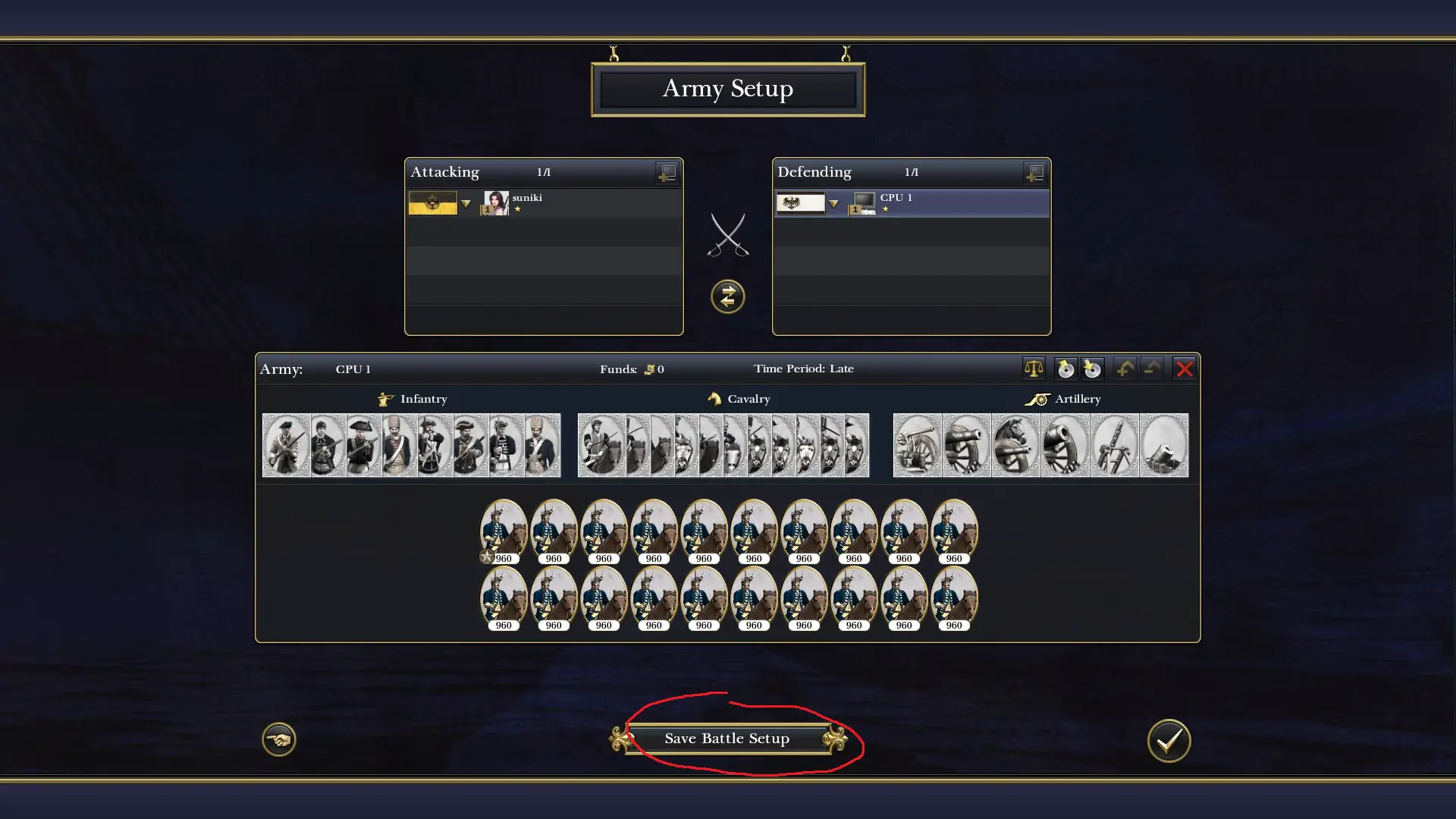
Don’t forget to Save Battle Setup before you start, so you can select this battle as many times as needed in Main Menu -> Single Player -> Play Battle -> Saved Battles.
Now you should choose Indian Artillery Fort.
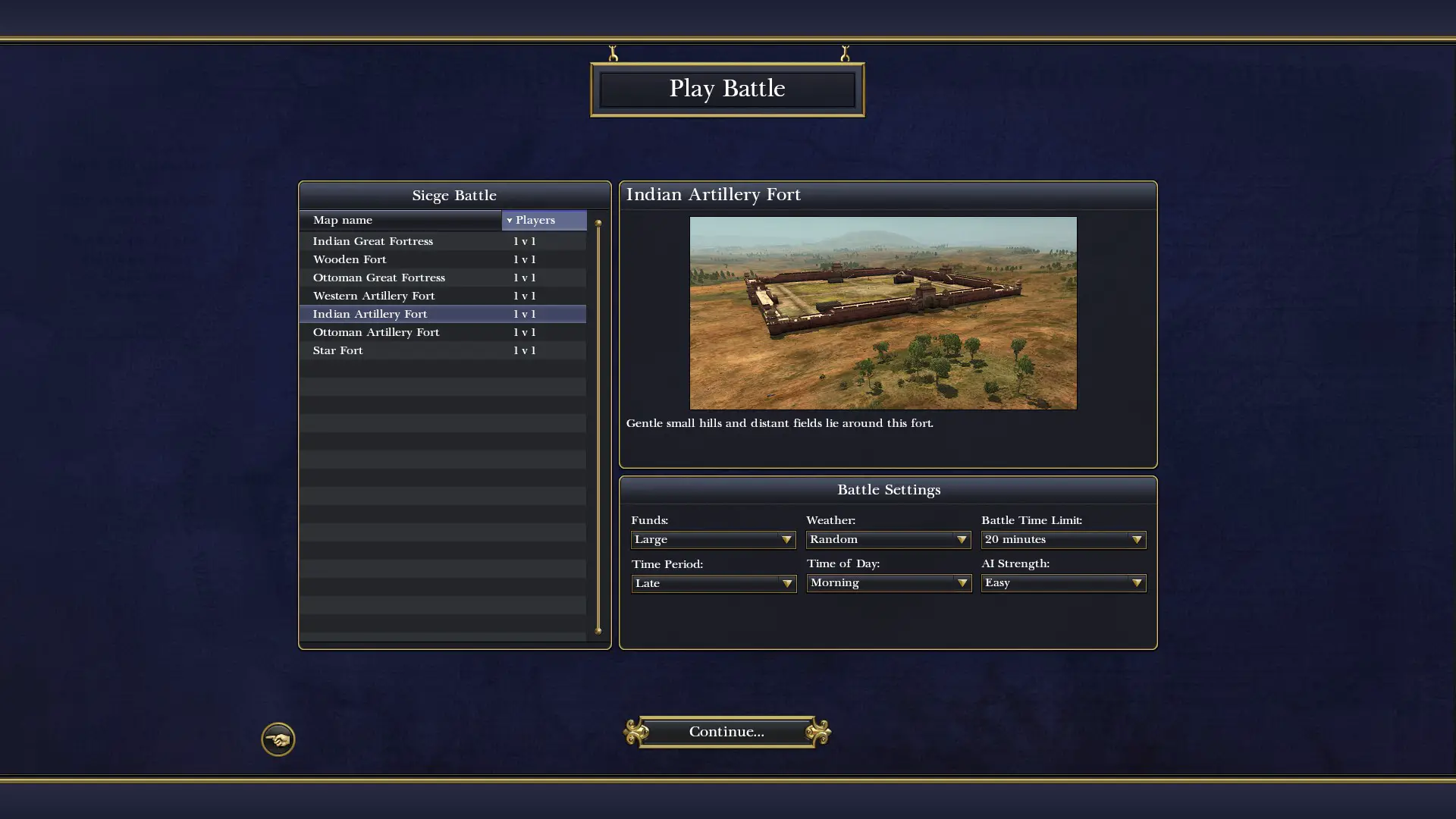
This fort is more effective as a death zone compared to the other Siege maps for 2 reasons:
- the fort is small but not too small such that all of the 19,200 horses spawn clutched together and inside.
- the fort is small and low lying making it easy for your howitzer shells to reach the center.
Death Farm
Once the map has loaded, press Ctrl+A to select all howitzers, Shift+7 and Shift+9 to unlimber and select Percussive Shot. Or just use your mouse.
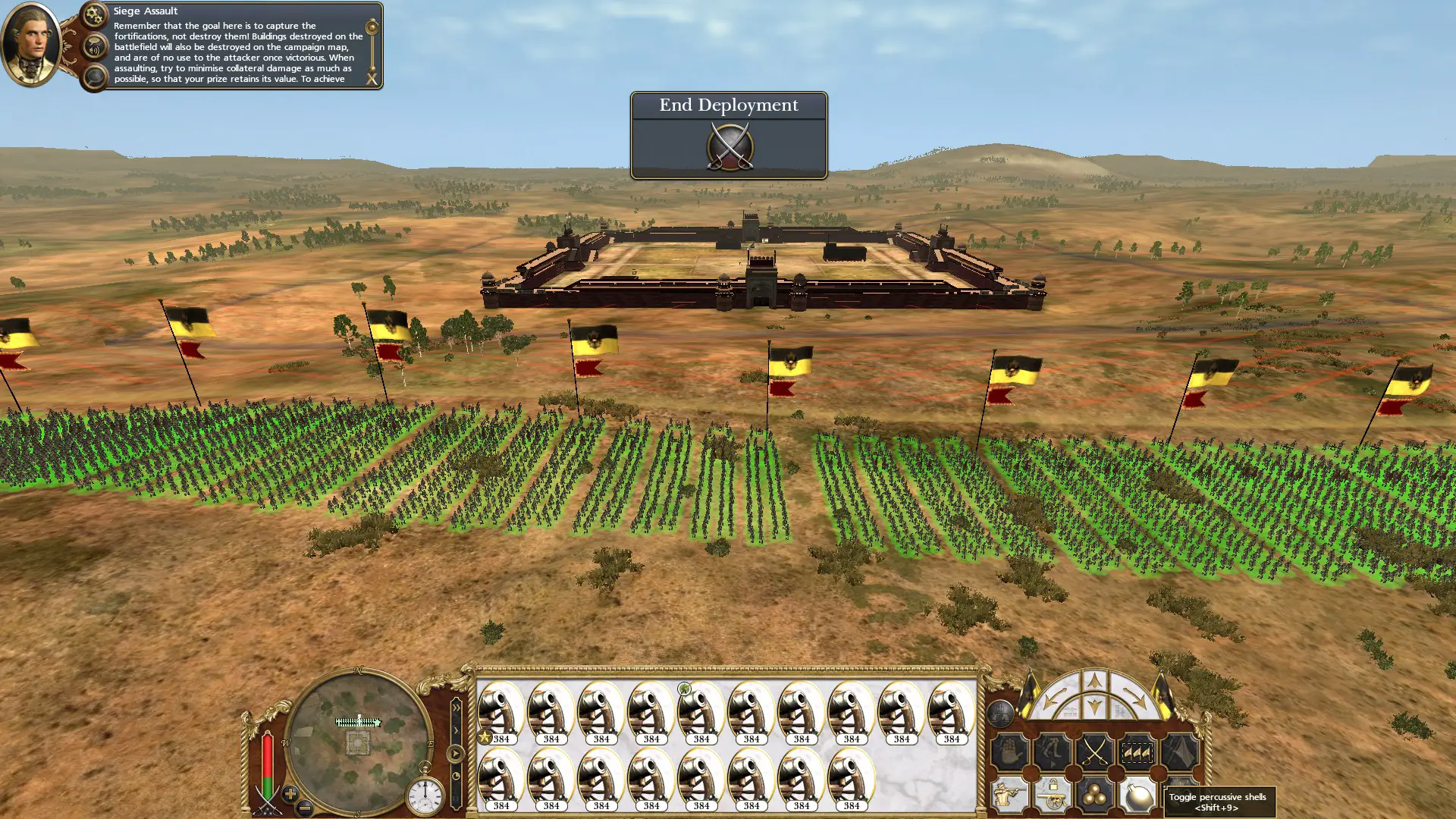
Now go to the center of the map. Then start the battle and IMMEDIATELY right click near the center to order your howitzers to target that area.
If you’re on campaign_unit_multiplier = 16, it will look like this:
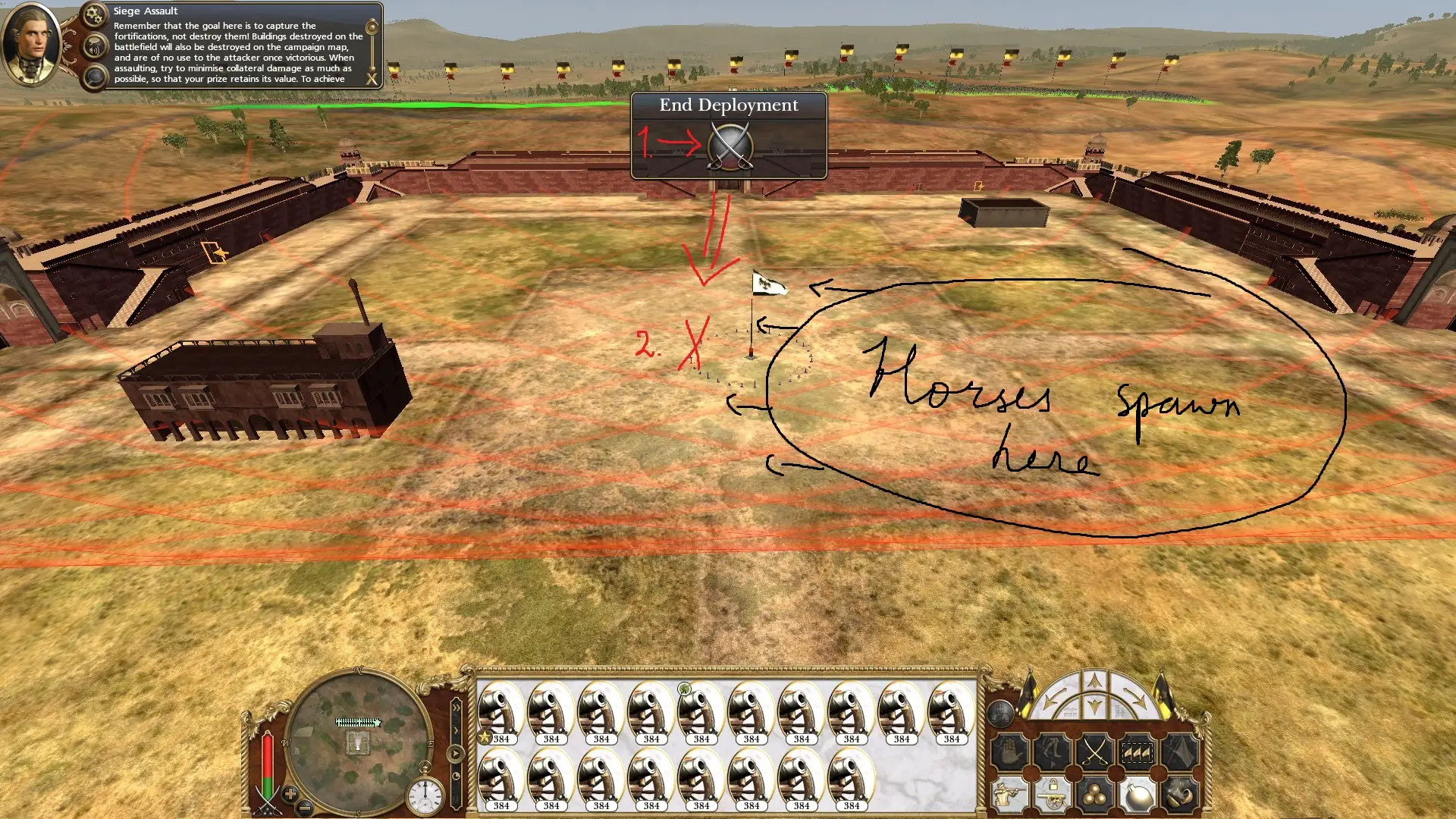
And for campaign_unit_multiplier = 8, it’s like this.
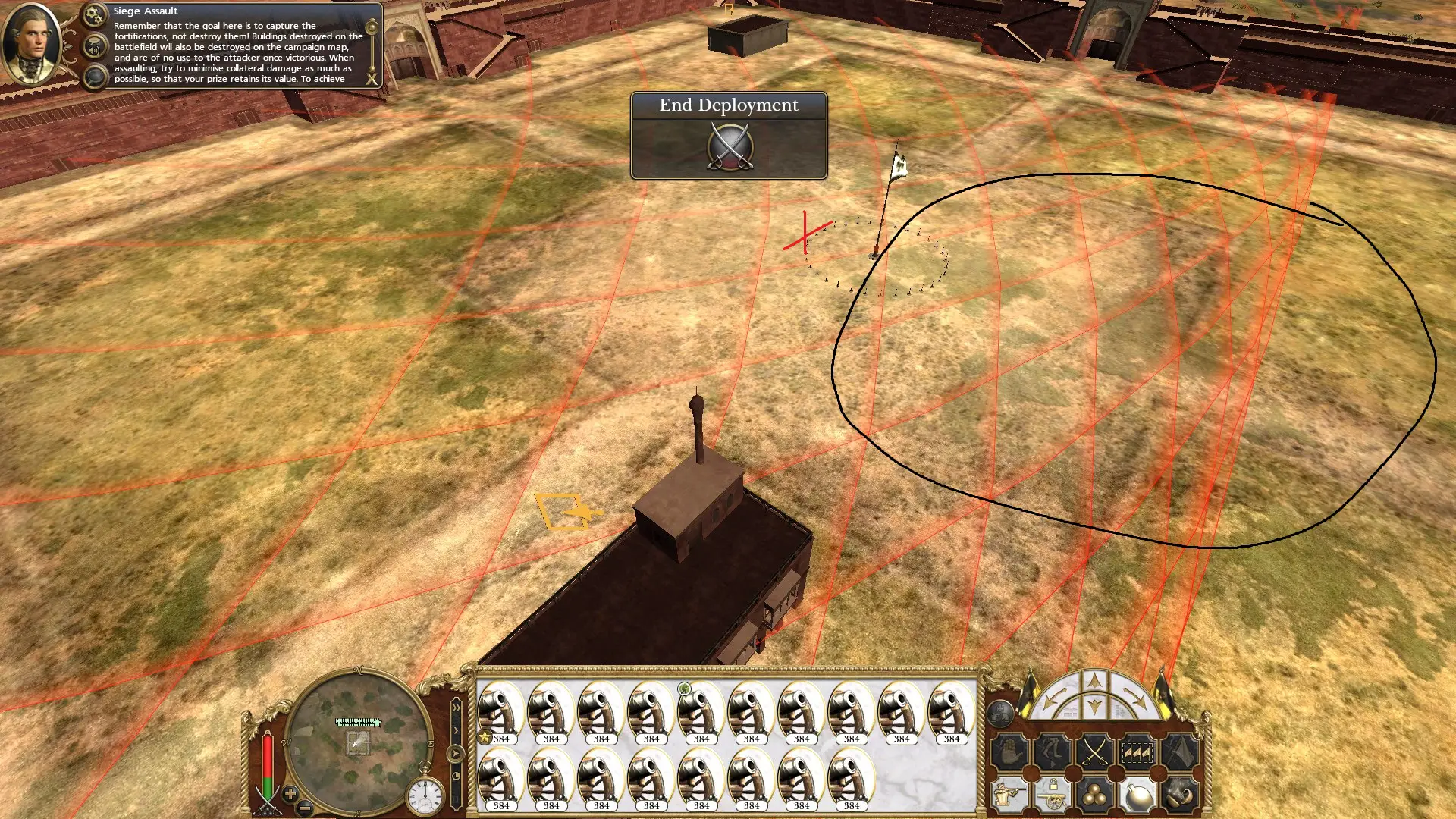
Now sit back and watch the sea of horses moving back and forth as they try to regroup after each fiery barrage and move over the center again.
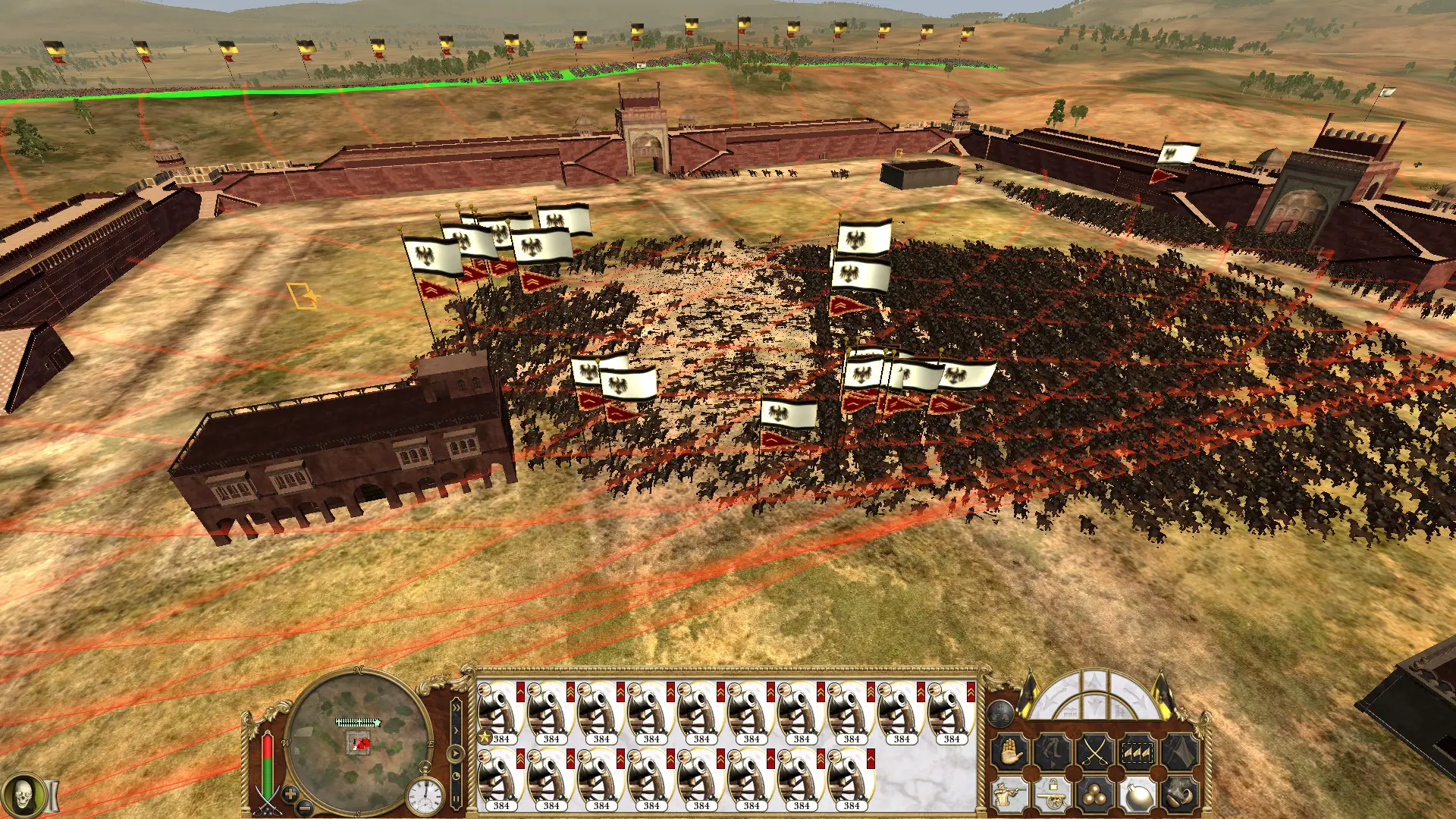
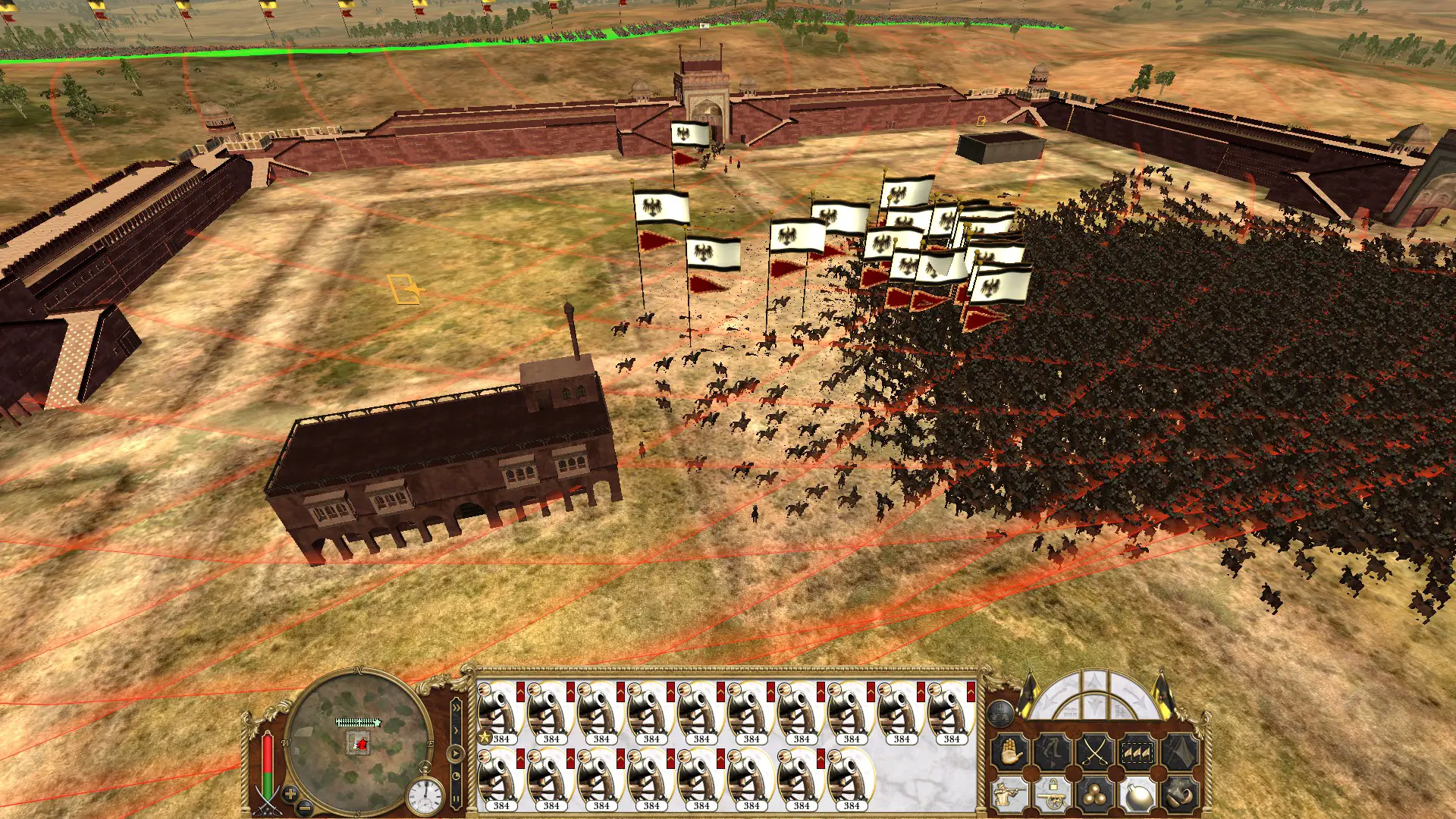
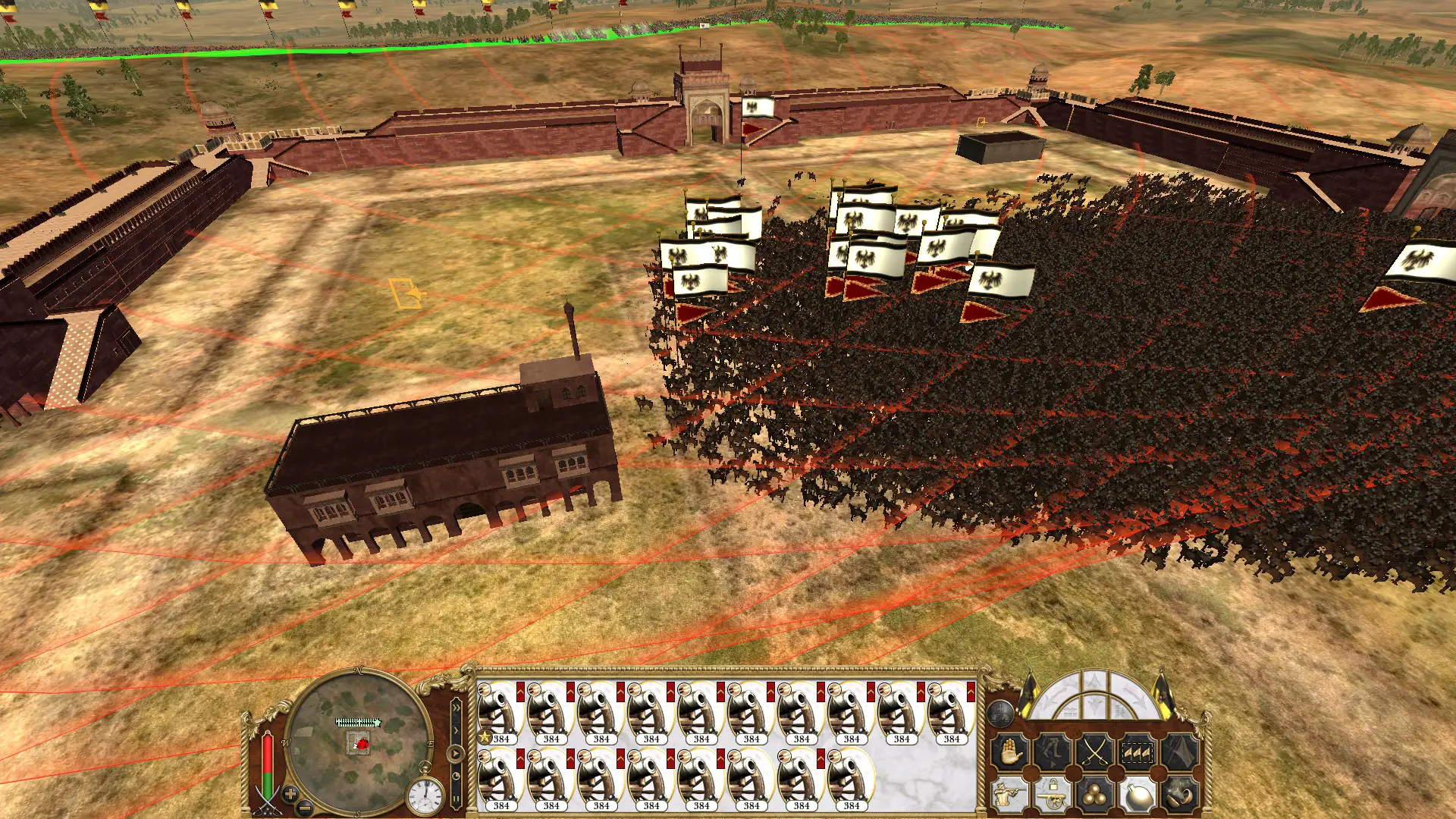
Usually, you’ll need about 5 volleys to completely rout them.



